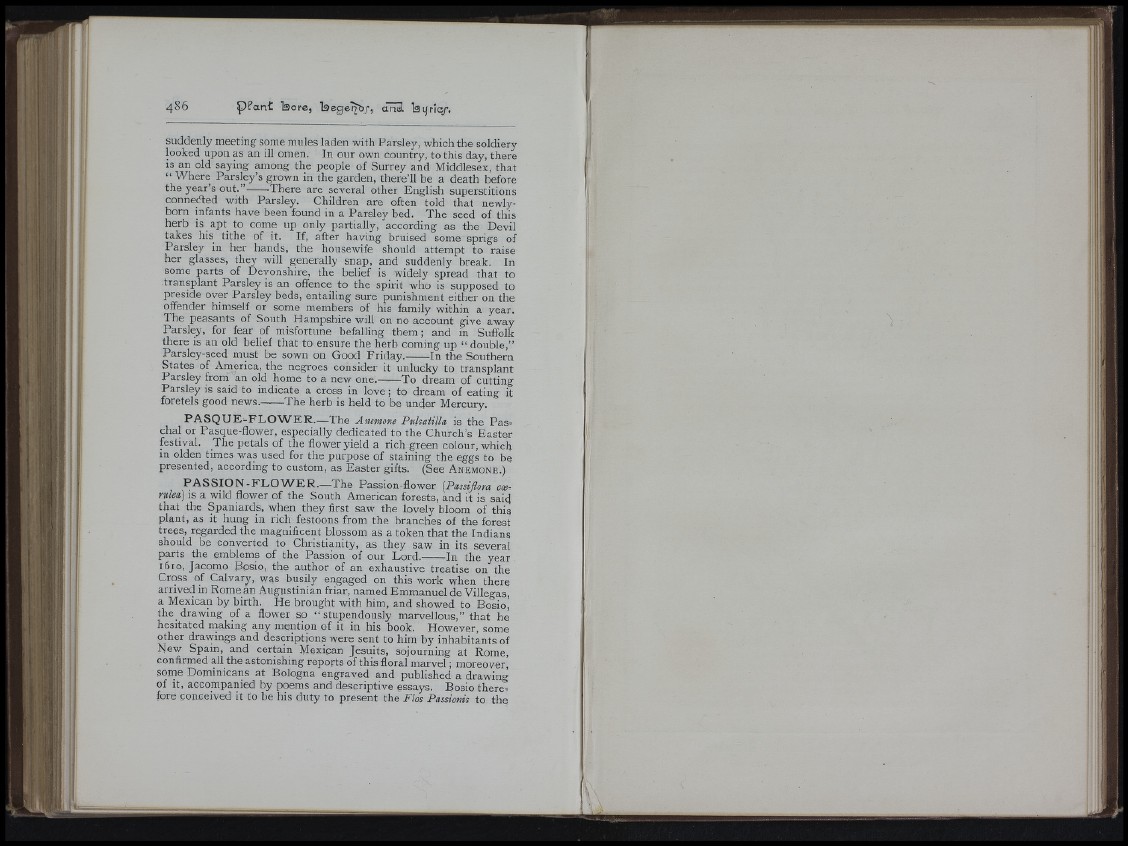
‘i t : ; ! |
suddenly meeting some mules laden with Parsley, which the soldiery
looked upon as an ill omen. In our own country, to this day, there
is an old saying among the people of Surrey and Middlesex, that
“ Where Parsley’s grown in the garden, there’ll be a death before
the year’s out.” .There are several other English superstitions
conneciled with Parsley. Children are often told that newly-
born infants have been found in a Parsley bed. The seed of this
herb is apt to come up only partially, according as the Devil
takes his tithe of it. If, after having bruised some sprigs of
Parsley in her hands, the housewife should attempt to raise
her glasses, they will generally snap, and suddenly break. In
some parts of Devonshire, the belief is widely spread that to
transplant Parsley is an offence to the spirit who is supposed to
preside over Parsley beds, entailing sure punishment either on the
offender himself or some members of his family within a year.
The peasants of South Hampshire will on no account give away
Parsley, for fear of misfortune befalling them; and in Suffolk
there is an old belief that to ensure the herb coming up “ double,”
Parsley-seed must be sown on Good Friday. In the Southern
States of America, the negroes consider it unlucky to transplant
Parsley from an old home to a new one. To dream of cutting
Parsley is said to indicate a cross in lo v e ; to dream of eating it
foretels good news.— The herb is held to be under Mercury.
P A S Q U E - F L O W E R .—The Anemone Pulsatilla is the Pas^
chal or Pasque-flower, especially dedicated to the Church’s Easter
festival. The petals of the flower yield a rich green colour, which
in olden times was used for the purpose of staining the eggs to be
presented, according to custom, as Easter gifts. (See A n e m o n e .)
P A S S IO N - F L O W E R .—The Passion-flower {Passiflora cerulea)
is a wild flower of the South American forests, and it is said
that the Spaniards, when they first saw the lovely bloom of this
plant, as it hung in rich festoons from the branches of the forest
trees, regarded the magnificent blossom as a token that the Indians
should be converted to Christianity, as they saw in its several
parts the emblems of the Passion of our Lord. In the year.
1 610, Jacomo Posio, the author of an exhaustive treatise on the
Cross of Calvary, was busily engaged on this work when there
arrived in Rome an Augustinian friar, named Emmanuel de Villegas,
a Mexican by birth. Ife brought with him, and showed to Bosio,
the_ drawing of a flower so “ stupendously marvellous,” that he
hesitated making any mention of it in his book. However, some
other drawings and descriptions were sent to him by inhabitants of
New Spain, and certain Mexican Jesuits, sojourning at Rome,
confirmed all the astonishing reports of this floral marvel ; moreover,
some Dominicans at Bologna engraved and published a drawing
of It, accompanied by poems and descriptive essays. Bosio there,
fore conceived it to be his duty to present the Flos Passionis to the
li !
f !
i . i ■ i b
3 : i
; ' : b :
1
1 i
■: 1
» / j \
l i l ' ! - i
i 1
i 7
i i